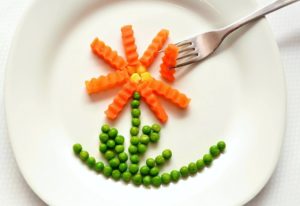
5 Keys to Personalizing your Diet and Breaking the Plateau!
It is easy to get frustrated, to lose hope and motivation because what you are doing is just not working! The main reason I see this is because people are forgetting to personalize their diets. What does this mean?
It means finding a way of eating that works for you; for your goals, your tastes, your lifestyle, your digestion and for the way your body responds.
We are all so different (awesome, right?!) So why do we think that a one-size-fits all cookie cutter approach to eating will work perfectly for everyone? If you have been working on your health and would like to take it a step further to personalize the way you eat for your unique body, follow these 5 keys to help give you a boot in the right direction of breaking that plateau and finally reaching your goals.
Be Sure to Download the Workbook for more tips and to help you find out how to eat for your body!
-
Create a Mindset for Change
Before you embark on any new habit in your life that you want to make consistent, you must first create a mindset for change.
I know, I know, you just want to get to what to do. But this is a absolutely critical part to personalizing your diet that if overlooked will end up sabotaging your efforts.
You must understand why you are doing what you are doing, and what your ideal outcome is. No program or person can do this for you. When you become completely clear on your WHY, then automatically will take out that nagging resistance to changing habits that we all have.
Your WHY is not just something as simple as “ I want to lose weight,” there are always deeper reasons than what might first come on the surface. If you think you want to lose weight, why do you want to lose weight? How would your life be different? Would you feel better in your clothes, therefore feel more professional in your business and more commanding in your work? If you lose weight would you have an easier time exercising, so then you can have more energy and keep up with your friends on those summer hikes?
Ask Why, then ask a deeper why.
 Creating a mindset for change that is clear on your intentions will guide you to the path of least resistance and help you make changes that can sometimes feel a bit tough at the beginning.
Creating a mindset for change that is clear on your intentions will guide you to the path of least resistance and help you make changes that can sometimes feel a bit tough at the beginning.
Don’t skip this step. To create your mindset for change, download the Personalize your Diet workbook to get started.
2. How many meals a day you should be eating
Is your energy a bit of a rollercoaster throughout the day? Do you end up snacking a lot but never really feeling satisfied?
We each have an ideal number of meals per day we should be eating that can range from 1-6. Old school mindsets would tell you “eat 5 small meals a day” for weight loss and a healthy metabolism. But this is an outdated and disproven method. For many that struggle with blood sugar issues (i.e. excess weight) or digestive problems, eating 2-3 square, bigger meals may be the best for their body.
Once you have insulin resistance or hunger signal confusion happening it can make it very difficult for you to feel satisfied, lose weight and keep consistent energy if you are always bombarding your body with food that it needs to process and breakdown. Taking breaks from eating throughout the day can help give your pancreas (insulin creator) and digestive system a time to calm down, sort out their signals, renew and give your body a chance to use that excess fat that is already stored up.
Others of you may be very active, you may be a full time waitress or construction worker, you may be running after your kids all day, then you also like to fit in your weight lifting or running. Maybe you are even training for your first half marathon? If you are in this camp, eating more meals throughout the day may fit you best. You may possibly go through your food stores quickly, are trying even to put on a bit of weight or muscle and need to consistently get in those calories to keep your energy up and reach your goals.
It can take some time to figure out what works best for you. If you have been eating one way or other for a while now and not making progress, try switching it up. Give yourself a few days to get used to the new way of timing meals, possibly eating more at meal times, and seeing how your body responds. It may be the key you have been missing to finally get off that plateau!
3) What carb type are you?
I do not do well on a high carb diet, too much fruit can throw off my hunger signals, and grains can easily throw off my digestion and energy.
This is quite a difference from where I was before I figured this out. I thought because I was young and active that carbohydrates should be the foundation of my  diet, that’s what the food pyramid told me right? Well, it didn’t work for me and I have seen how it doesn’t work for many others out there.
diet, that’s what the food pyramid told me right? Well, it didn’t work for me and I have seen how it doesn’t work for many others out there.
Just like how many meals we eat throughout the day we each respond to how much carbohydrate foods we eat and what time of day we do best with them.
If you are working on your blood sugar control and looking to lose weight, then eating the majority of your carbs in the evening may be the best for you. Yes.. you heard me right, I told you to eat carbs at night! This does not mean desserts and your evening milkshake, but it may mean having your sweet potato and brown rice at dinner instead of starting your day with oatmeal.
Why is this?
Because a healthy insulin response (your ability to properly handle carbohydrates) should peak around dinnertime. This means that your more likely to use these carbs instead of storing them and can set your body up to get a restful night of sleep.
Carbohydrates can mean anything from fruit, to beans, to grains or starchy vegetables. But one key to personalizing your diet is to experiment with when and how many carbohydrates you eating throughout the day and see how your body responds. If you have been trying to eat your carbs in the beginning of the day and have not been making progress, try switching this up and see if it feels better to you.
To get ideas on how to do this, be sure to download the workbook below!
4) Digestive health & inflammatory foods
If your digestion is not working well, then even a seemingly “healthy” diet can be holding you back.
Our digestive system is the foundation of our immune system and is intimately partnered with your hormonal system and metabolism. Poor digestion can put you in a bad mood, make you fat, and make you fed up.
If you do not feel you have any major health issues than adding in some cultured, probiotic-rich, fermented foods may be a great addition to optimize your gut. Try eating some raw sauerkraut, kimchi, kombucha or yogurt into your day.
If you have more nagging health issues, like poor skin, mood imbalances, fatigue or digestive pains, then deeper research into the foods you are eating can help you figure out what the triggers may be. You are what you eat, and if you are eating foods that your body is responding negatively too it can manifest in different health symptoms.
Following an elimination diet and keeping a food journal are two of my favorite ways to find which foods are offending you. These methods can help you tune into your body and see how it is reacting. Some food intolerances can cause issues 2-3 days after you eat it?!
I don’t know about you but I do not really know what I ate 3 days ago. With a food journal, if a headache or a few extra zits pop up you can look back at your list and find patterns into the foods you are eating and how they may be causing trouble.
In the workbook below you can find a food journal you can use, try this out for 5-7 days and see if you discover a new way to personalize your diet for your body!
5) Switching from “Diet” to “Eating Lifestyle”
The last key, but definitely not least, to truly personalizing your diet is to stop thinking of it as a “diet.”
Often when we stay diet we think of something restrictive, short term, looking to create dramatic results. How many times have you tried doing this? Did it always work out for you?
I am going to venture to guess likely not. This is because eating is not a short-term activity, it is something we have to do every day for the rest of our lives. This does not mean that you won’t see results quickly, but it does mean that your motivation will not fade quickly. When you are personalizing your diet you have to put in the time to get to know your body and realize you may have curve balls thrown at you once in awhile. Personalizing your diet means that you take time to track and monitor your progress, see that not getting the results that you wanted is not “failing” but is purely information telling you that you should try something  new. Personalizing your diet is doing a bit of experimentation and research into how your body responds and how it functions.
new. Personalizing your diet is doing a bit of experimentation and research into how your body responds and how it functions.
This does not have to be hard, but it does require a bit of patience and holding onto your “why” so that you can make the changes that make the difference. Nobody can do this part for you unfortunately, but you can get assistance and strategy that is proven to work to help you reach your goals.